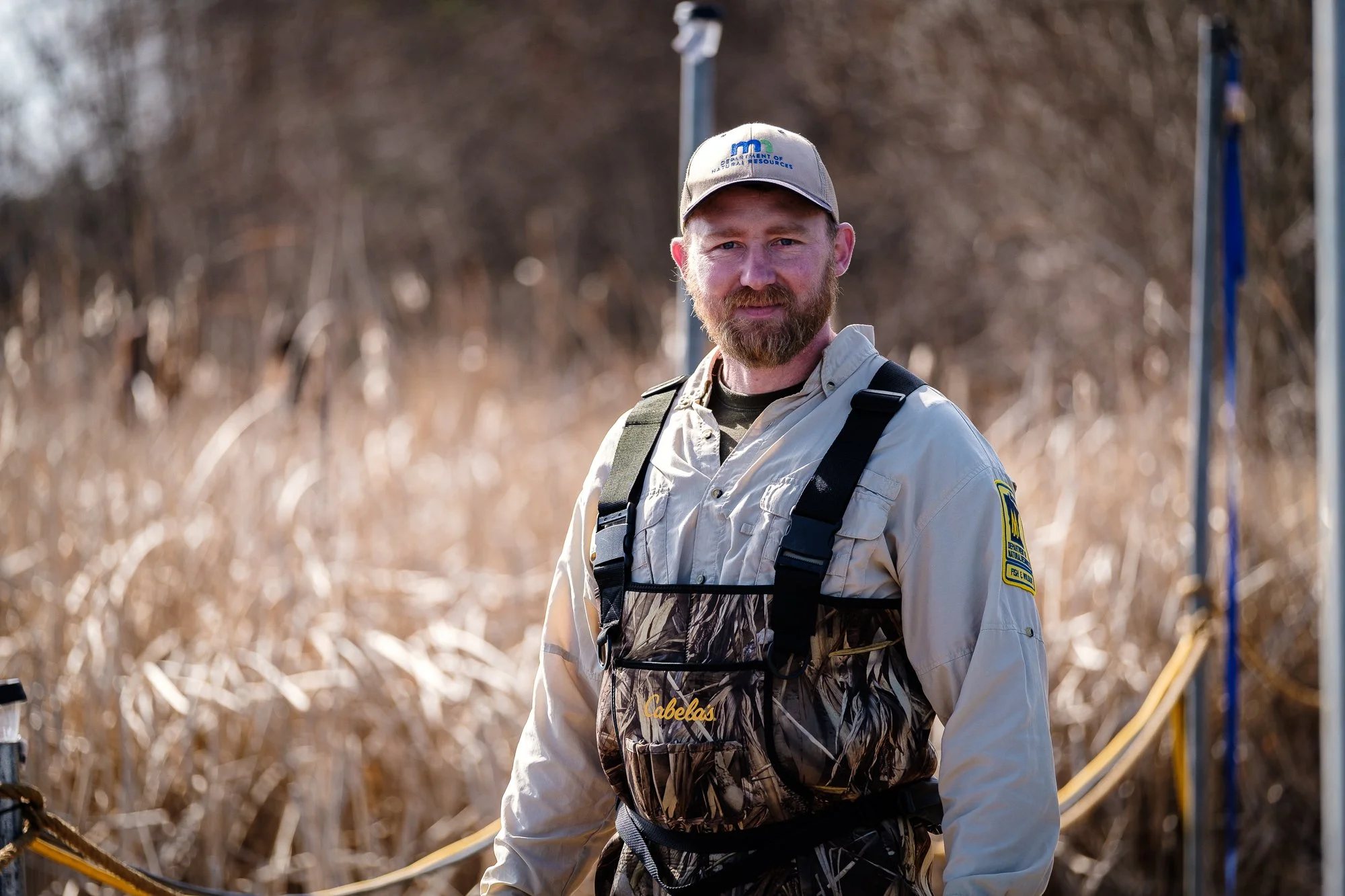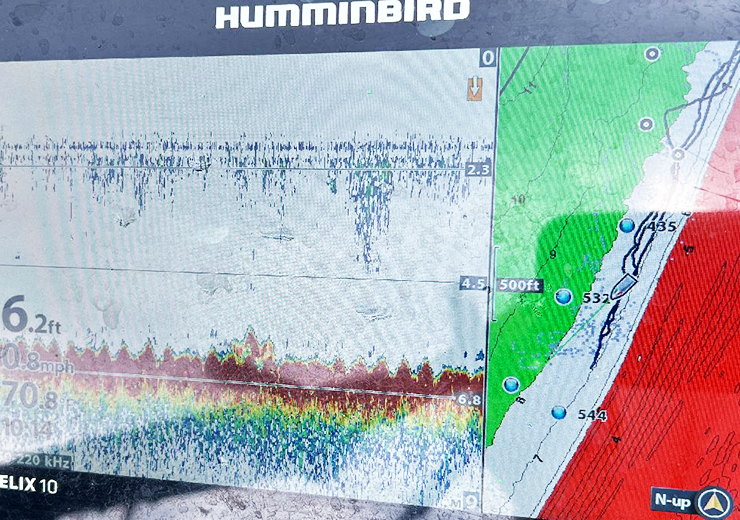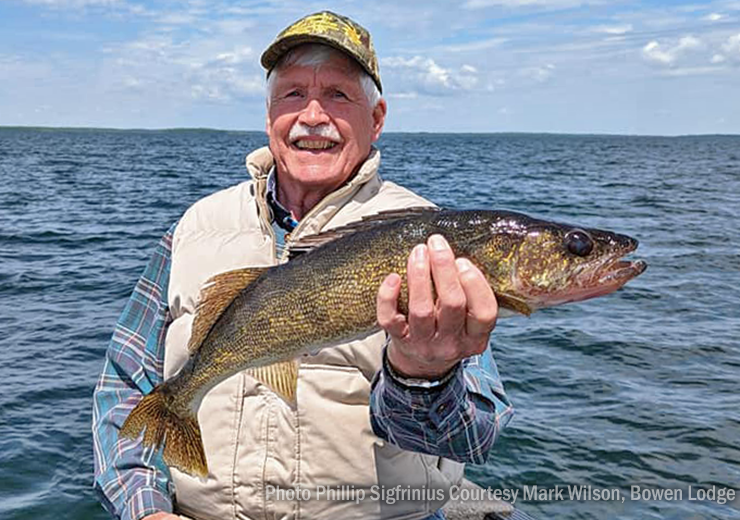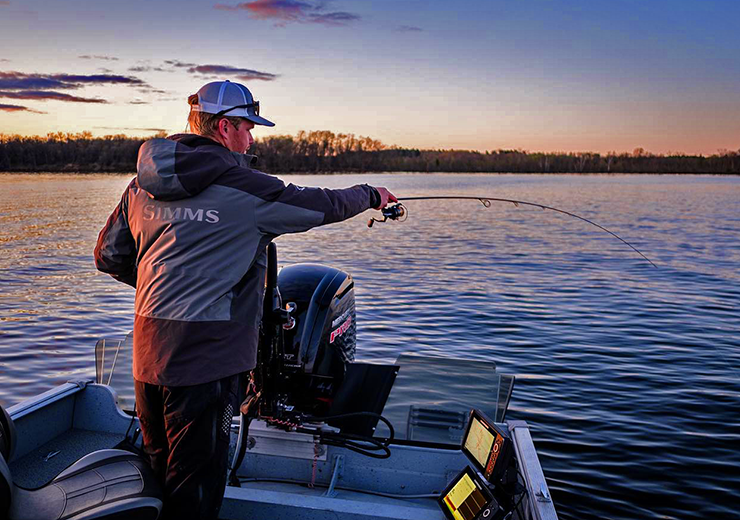Shallow water fishing is back in vogue on Lake Winnie this week!
Jared Saufferer with Bowen Lodge Guide Customers
A string of sunny, warm days moved the needle up on surface water temperatures over the past weekend, briefly reaching highs in the mid-70s on Monday before cooler overnight temps and breezy weather arrived. Temperatures have now re-settled into the 71–72-degree range, but first, that warm up did trigger an uptick in the lake’s algae bloom. That’s important because the nutrient rich water not only provides food for tiny fish, but also diffuses light, which encourages walleyes to move into shallow water when they’re feeding. Add some wind, some overcast skies, a strong population of walleyes and the stage is set for a good outing on the big lake.
As the photo of our resident guide Jared Saufferer and his crew reveal, those were the conditions on Tuesday and the result was locating good numbers of fish on shallow breaklines in water depths of 6 to 8 feet.
Walleye Location: Shoreline Breaks, 6 to 8 feet of water
Key presentations vary with anglers’ preferences, but trolling spinners tipped with a minnow account for the largest proportion of the effort. Jigs and Minnows, trolling crankbaits and night crawler harnesses are also productive for those who choose those alternative presentations.
The action was wild and wooly on Tuesday, and most folks on the lake caught fish using minimal effort. Without doubt, the grey skies and choppy water made that easier, but we think that an advancing line of thunderstorms encouraged the feeding frenzy even more. If the action slows today, we’ll be advising guests to explore an alternative game plan, fishing mid-depth flats.
Center Bar, Bena Bar, Sugar Bar and other prominent mid-lake structures offer miles of habitat in the 12-to-16-foot range. Walleyes, perch, and pike move in both directions across the sprawling flats. On a clam, sunny day, we may still locate some fish in shallow water, but there will also be many fish scattered across the mid-lake-terrain, holding on gravel, rock or patches of vegetation. The report we offered on 8-04-22 provides valuable information about this pattern, so check that for a refresher.
Both pike and perch appear to be more locked into the mid-lake pattern than are the walleyes. Finding perch rooting around on gravel and light rock to locate crawfish is one reliable pattern. Also reliable is locating them at the soft-bottom base of mid lake structure feeding on insect larvae. Water depths vary from one structure to the next and could range between 5 and 16 feet for the gravel/rock pattern. Water depths of 22 to 28 feet will get you close to the deep water, insect feeders.
Pike, especially larger ones are feeding primarily over open water on the big lake right now. There are some smaller, eater size fish roaming the flats and along shallow breaklines wherever vegetation is present. In the shallows, you’re likely to catch almost as many pike trolling spinners for walleye as you will by targeting them. Over the flats, trolling large crankbaits is a good idea. Deep, steep breaklines along the dominant mid-lake structures can be effectively targeted using large, lively minnows on Lindy Rigs, or added to large blade spinner rigs.
On Cutfoot Sioux, deeper vegetation is holding some pike of quality size. These can be targeted by casting larger spinnerbaits, soft plastic swim baits or wooden jerkbaits. During late summer, casting for pike could also produce a musky, so keep your eyes peeled, watching for any sign of a follow.
Panfish have taken a back seat to walleyes lately, so there is not a lot of current information. That said, the few anglers targeting crappies suggest that vegetation is still the key to finding them. Target the holes and gaps between cabbage plants using small jigs tipped with plastic action tails. It would be a surprise if there were more folks fishing them later, so watch for the next report.















